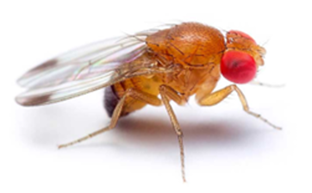The spotted wing drosophila (SWD), Drosophila suzukii, is an invasive fruit fly which originated in Japan and has since spread across the world, first being detected in  Scotland in 2014. The male has the characteristic black spot on the wing and the female lays her eggs in ripening and ripe fruit using a serrated ovipositor. This serrated ovipositor causes physical damage to the host fruit and provides a wound which can be accessed by other insects and pathogens. This pest of soft and stone fruit, if left uncontrolled, can result in extensive financial losses for the grower.
Scotland in 2014. The male has the characteristic black spot on the wing and the female lays her eggs in ripening and ripe fruit using a serrated ovipositor. This serrated ovipositor causes physical damage to the host fruit and provides a wound which can be accessed by other insects and pathogens. This pest of soft and stone fruit, if left uncontrolled, can result in extensive financial losses for the grower.
SWD has been monitored in Scotland for twelve years. During this time, the total number of SWD caught annually, has remained lower than those recorded in England, but an increase in numbers in Scotland has been observed since 2021. Variation in numbers caught between years and variation within the year are evident. During the year, numbers caught remain low until August and usually peak in November suggesting that the SWD are using wild plant species as alternative hosts when the commercial crops are not available. Modelling is being used to understand how the climate, surrounding habitats and landscape is driving this variation in numbers throughout and between years.
Genomic technologies can play a role in understanding aspects of pest biology including development of insecticide resistance, invasion and migration patterns, seasonal patterns and population structure. Work is ongoing to establish a base line genetic profile for the Scottish population and genetic analysis and has not yet identified any clear structure in the population.
To look for viable control options for the SWD, varietal susceptibility to SWD has been tested in raspberry and blackberry. Using emergence testing and no-choice assays it is apparent that there is variation in susceptibility between varieties of raspberry and blackberry.
Future work to build on the data already collected and develop control strategies that provide IPM options for growers will include identifying volatiles in the berries that vary in susceptibility to the SWD. Along with this, Pyracantha has been shown to be a promising novel control strategy. It works as a dead end host where the females are attracted to and lay their eggs in the berries but the larvae fail to develop within the berry. Behavioural assays and volatile identification will indicate if this will be a useful addition to the IPM tool box for SWD control in Scotland.
For further details contact Gaynor Malloch
